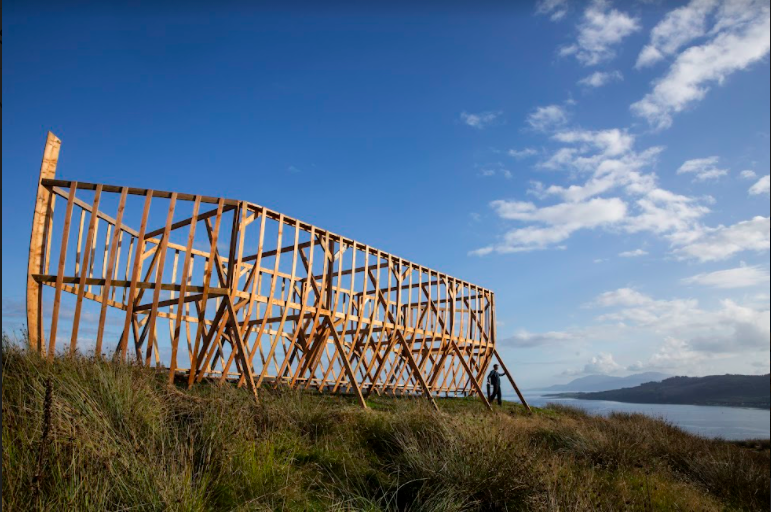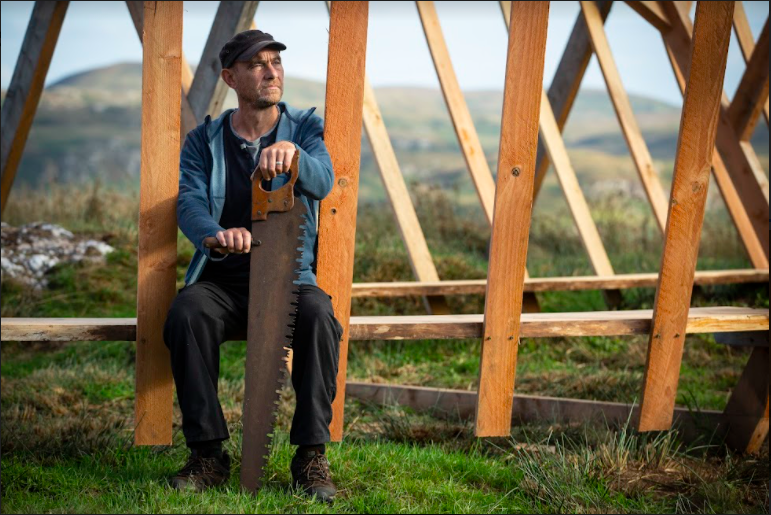The Ark sits atop a hill above the village of Tighnabruaich overlooking the Kyles of Bute in Argyll. It was built by Scottish woodsman David Blair with his brother Rob and friend Scott over a period of two weeks in August. Constructed using larch trees that were felled to waste 3 years ago due to fungal disease that could soon see the end of Larch in Scotland.

It is of huge proportions at over 20m long, 6m high and over 5m wide with a bench seat all the way round. The Ark serves as a meeting place, a landmark and a call to action for the world leaders meeting in Glasgow for COP26. The resonances with the story of Noah and the flood are clear and the team behind it hope that the dramatic form that most people will recognise from nursery school will make the connection with sea level rise, and the existential crisis that we face today as a result of climate breakdown.

The sculpture has become a popular destination that has attracted the local schools to visit, filmmakers and journalists and a delegation of indigenous leaders coming to COP26. It stands as testament to the urgent need for action on the climate and ecological crisis that is posing an existential threat to the future for humanity and life as we know it.

To spread the message of urgency at COP26, local people in Argyll have created biodegradable beermats and coffee cups to be distributed across pubs, hotel bars and coffee shops in Glasgow.


Read more on the ark in this Guardian Article.


Nick Cullen
Nick is a past coordinator for the Climate Fringe platform and Climate Fringe Festival, working on strategy, website development and communications. He spent two years at SCCS in the lead up to COP26 and led on developing the Homestay Network, volunteering programme, COVID-19 safety, and many other aspects of logistics and operations in collaboration with the COP26 Coalition.




